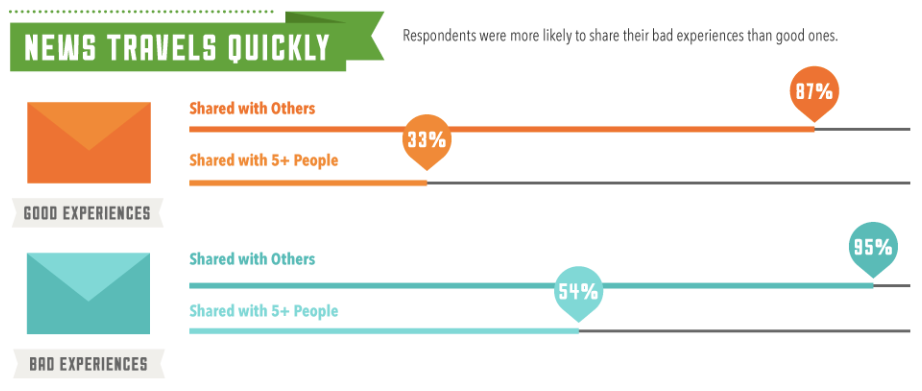Stay updated!
The best customer experience content delivered right to your inbox.
How to Integrate Customer Feedback into Customer Service Training
by UJET Team |
Your team hears more direct customer feedback than anyone else in the company—their interactions make up the bulk of the customer experience. Whether they’re helping a customer solve a problem, walking through a difficult process or following up on billing, each interaction makes an impact.
That’s why a comprehensive training program that includes customer feedback is so valuable.
Training with customer feedback shows your team how important every interaction is.
- Positive feedback builds an emotional connection to the customer experience. It helps your team buy into the influence that a truly great experience has for each customer relationship.
- Negative feedback is a great teaching tool. You can use it in role-play scenarios and create conversational best practices. It helps your team gain insight into how a customer’s feelings affect their experience.
- Technical feedback like feature requests or in-depth coding questions shows your team how to ask questions and dive deeper into every issue.
When you consider how these different types of feedback play into every interaction with customers, you’re setting the whole team up for success.
Empower your team with positive customer feedback
Incorporating examples of positive feedback into training programs is a great way to show your team how much interactions contribute to the customer experience. It gives each agent a way to recognize and understand the impact of their work.
When your team receives positive feedback, use it to:
- provide valuable context for new hires
- showcase exceptional customer service interactions from the current members of your team
- highlight conversational best practices that resonate with the customer

The effects of customer feedback on the customer experience via Salesforce.
A great way to discover these types of interactions is satisfaction scores. If a customer leaves a comment alongside their positive feedback, you can use it to dig deeper into why. Customers are more likely to comment on the interaction if it was truly memorable.
As you look through feedback, you can start capturing the kind of language that resonates with your customer. You should create a best practice document that outlines the most important points of each conversation and make sure that the agents, who excel at these conversations, can add their feedback. Getting your team involved with building trainings is a great way to boost engagement as well.
Using positive feedback in customer service training programs helps build a framework for how your team should think about connecting with customers. Fostering these personal relationships helps keep customers coming back again and again.
Teach strategies for handling negative customer feedback
Receiving negative feedback from a customer is one of the most difficult things your agents experience. They have to make the customer feel valued and solve the issue without contributing to the feelings of frustration and confusion. Being able to take this feedback effectively requires a number of different skills—all of which you can develop with a comprehensive training program.
When your team receives negative customer feedback, it’s important to spend time finding the root cause. If you dissect these examples to work out specific areas for improvement, it’s easier to communicate those areas to the team.
Use these examples as role-playing scenarios in your training and give every member of the team the tools they need to potentially turn a negative experience into a positive one.
If you’re not able to accomplish this, your customers are more likely to share their negative experience with others.

Potential to share negative experiences via Zendesk.
Use examples of negative feedback to build a training program that helps your team recognize trigger words. If a customer asks about how to process a return or what is needed to back up their account, your team will know to dig deeper.
Categorizing the different types of negative feedback you receive will also highlight areas of opportunity to improve your product. If customers typically have any issues during product onboarding or consistently need more help during a particular step in the setup process, you can create focused training to ensure that the team can help solve these issues.
When you utilize negative feedback in your customer service training your team can easily recognize and alleviate customer frustration without getting flustered by the customer’s emotions.
Use feature requests and technical feedback to your advantage
Your customers won’t just leave feedback on their interactions with your team.roduct impressions, how it integrates into the customer’s workflows, and feature requests are all types of feedback that need to be addressed. This kind of feedback requires a different set of skills, so use examples to teach your team how to record technical feedback and communicate it to the product or engineering team.
For this feedback to be useful, it needs to get to the right person as complete as possible. You should have a standardized process to take feature requests from customers that ensures the right information is collected.
Having this process in place not only helps get the right information collected up front, it cuts down on the need for back and forth with the customer. This is one time where having a scripted set of questions can be helpful. It lets the customer know you’re taking their feedback seriously because you have a process to handle these requests.

You can use this kind of feedback to create training on how to ask relevant questions and dig into technical issues. When a customer reaches out with this feedback, they’ll likely be experiencing some level of frustration. Being able to walk the line between getting information and offsetting that frustration is something that can be rehearsed during training.
Give your team the training they need to gathering information on technical and feature-related issues. It’s important for them to drive the conversation and get the best information possible to help resolve the customer’s issue.
Customer feedback helps make your team better
Being able to handle various types of customer feedback is an important skill for every member of your team. When they can properly address this feedback while resolving the customer’s issue and alleviating frustration, it helps create a better customer experience.
Incorporating this feedback into your customer service training programs will help ensure that every member is at the same level. Providing the kind of consistent experience your customers expect is what makes your team successful.
The best customer experience content delivered right to your inbox.